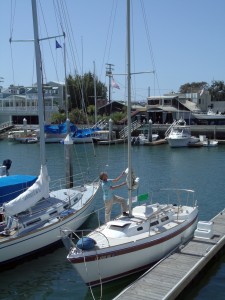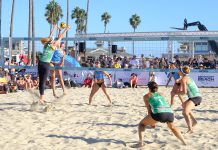 I didn’t have the space available last week to finish my comments with regards to the most recent tragic events of three weekends ago.
I didn’t have the space available last week to finish my comments with regards to the most recent tragic events of three weekends ago.
First, I will again say, and never tire of saying, how important safety is to all forms of boating. Without careful planning and proper supervision from the captain, an accident, even a tragic accident, is easily within reach of all boating occasions.
More than 90 percent of all boating accidents are preventable. Another eight percent are mechanical and structural elements unknown to the captain and crew which are out of sight and mind. The remaining two percent could be considered fate or bad luck, or both. These statistics are my conclusions of more than 60 years of boating and probably 10,000 hours of pleasure and commercial boating.
With regards to the San Clemente Island accident, I have a few thoughts and conclusions I’ll mention.
I found dragging my anchors in several different situations that the written standards for anchor size, chain size and length were quite insufficient except in the most ideal and calm conditions.
With regards to racing sailboats, there is another selfish motivation. Most skippers who spend a lot of money on their racing yachts want to get their money’s worth by winning their races. There is also the personality trait of “bragging rights” at the yacht club bar following the race. These can be dangerous motivations as skippers will minimize the added weight of gear, drinks, ice, clothes, etc. which combined will slow the vessel’s speed.
Also, as I mentioned above, my experience has been it takes a much larger anchor, chain and chain length, (more weight), to keep from dragging the anchor and running aground. Add a 30 mile wind and choppy seas like at San Clemente Island and accidents could be just around the corner.
For novice and less than experienced boaters, I’ll pass along what works for me. On our 1968, 17-foot Glaspar, we use an anchor for a 28 to 30-foot boat. I have doubled the anchor chain thickness necessary and our length of chain is for a 35-foot yacht.
We have been in some nasty seas along our coast but have never dragged the anchor. Unfortunately, my methods are not found on aggressive sailboat racing machines. They try to eliminate as much weight as possible and the Columbia 32 accident reports mentioned that the anchor did not hold.
Following that tragic accident, we emailed a list of questions and comments to Vince Valdez at the factory, but his email box was full and unable to receive any mail. I have phoned the factory several times to obtain information and comments and have left messages, but have not received a response. This is not a good way to manage a crisis. No response looks bad.
Last Friday we ran “Kingfisher” from King Harbor (Redondo Beach), to Alamitos Bay Fuel Dock for fuel tank cleaning and fuel polishing. The following day was the start of the Cabo San Lucas sailboat race. Several super sleds (70-foot and larger racing sailboats designed for downwind and reaching on long distance races) were either cruising by or fueling at the fuel dock. As I was working I forgot to take pictures.
We also visited with the crew of a super sled with the helmsman hailing from New Zealand and a crew member from Baltimore, Maryland at the Long Beach West Marine. I was lucky to have the lovely Judy Belle along as First Mate.
I’ve included a picture of the 1978 25-foot “Sand Dollar” O’Day Sloop I’m racing on from Newport to Dana Point in the “Race to the Border” this weekend. Captain Rod was onboard for Sunday’s picture perfect warm spring weather. If you see us racing and you’re aboard another boat – holler!
Sea Ya,
Skipper Steve




